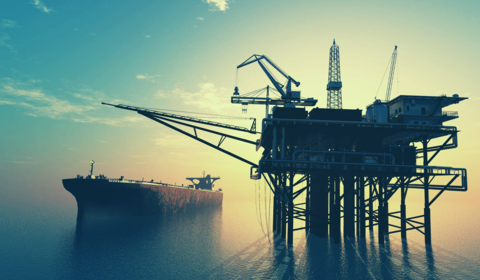
Adding value to drive down the cost of decommissioning
Decommissioning is a reality in the oil and gas industry, which presents its share of challenges. Digital twinning is emerging as a one-stop solution that could save up to 15% on total decommissioning costs.
The number of aging offshore oil and gas platforms and assets has grown exponentially in recent years. In fact, according to a key study, more than 600 offshore oil and gas projects worldwide are expected to be decommissioned between 2016 and 2022 with 2,000 more to follow. Due to this upward trend, spending on decommissioning is on the rise—a figure that is forecasted to jump from 2.3 billion USD in 2015 to an anticipated 13 billion USD per year by 2040. That is an increase of a staggering 540%.
In addition to rising costs, stringent decommissioning regulations are increasingly becoming the norm as more and more structures inch closer toward end-of-life status. This is because safety and environmental considerations are key concerns when bringing an operating site to a state that closely resembles its original environment. As a result, owners and operators now face significant challenges when planning the decommissioning of their assets—a costly endeavor that also carries significant regulatory obligations.
Decommissioning regulations: from stringent to nearly non-existent
Around the world, decommissioning regulations for offshore oil and gas projects vastly differ. In the USA and Mexico, for example, decommissioning has been in effect for a long time, with detailed regulations for the sealing of wells. This helps protect the environment and people using the waters. Rigs to Reefs programs have also been developed. Brazil, Nigeria, Angola and Southeast Asia—areas in which decommissioning demand is projected to spike in the years to come—are in the earliest stages of regulation development.
The North Sea, on the other hand, boasts the world’s most stringent decommissioning regulations. Of the some 184 assets located there, many are either at, or approaching, end-of-life status. But while the North Sea does not have the highest number of offshore oil and gas structures in the world, it does, however, outspend all other regions on decommissioning. This is due to the portfolio, which includes much larger and voluminous structures—for which decommissioning costs are typically much higher—are located in the North Sea. In addition, Rigs to Reefs programs have been blocked in the North Sea, thereby requiring operators to handle decommissioning across all critical stages, including removal and disposal.
A one-stop solution for accurate asset data
As decommissioning regulations tighten around the world to deal with increased demand, owners and operators will require advanced solutions to ensure full compliance. And digital twinning—which involves creating a mirror image of an asset to support integrity management—is proving promising in this respect.
In fact, a digital twinning solution has the potential to deliver a one-stop shop for accurate asset data that is necessary to inform decommissioning planning, strategy and best processes. It simplifies and prioritizes data in its entirety, thereby facilitating decision-making.
And the benefits do not stop there. For operators, a digital twin can:
- Ensure environmental protection by virtually visualizing the asset’s dismantling, thereby forecasting situations that could potentially be harmful to the environment and marine life
- Eliminate or mitigate safety risks by enabling virtual simulation to run hazardous activity without a physical presence
- Enhance collaboration across the supply chain, thereby potentially improving contracting models and innovation
With environmental protection and safety as the top two priorities for offshore oil and gas projects, digital twinning can offer insight on both, thereby informing a sound decommissioning strategy.
Digital twinning to drive down decommissioning costs
Digital twinning can also help reduce costs through optimization and efficiency gains. This can enable operators to drive down the mounting costs of decommissioning their assets. According to recent research by BV Solutions M&O that was verified by the Oil & Gas Authority, operators could save up to 15% on total decommissioning project cost when using a digital twin and smart data system.
For example, a digital twinning and smart data management system — already deployed by BV Solutions M&O — has already contributed to significant cost savings by helping operators anticipate issues. This in turn reduces maintenance costs in normal offshore operations. Given this success, digital twin technology could also be deployed to help owners decommission more cost-effectively and safely while ensuring compliance to all regulations.
With decommissioning listed as a hard cost on the balance sheet, these savings would be more than welcome. Digital twinning could thus be an effective way of mitigating the financial burden of decommissioning.
Global Business Development Director
BV Solutions M&O
“Digital twinning is gaining greater acceptance as a trusted method to reduce decommissioning costs—as much as 15% on total project costs, according to BV Solutions M&O estimates. Now that adds exceptional value to any balance sheet!”